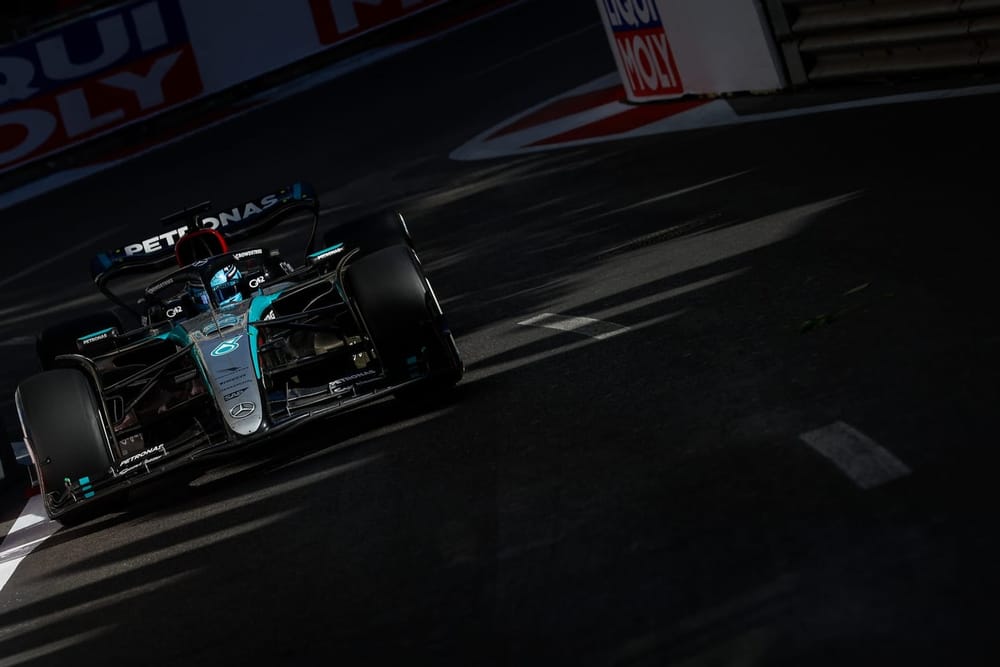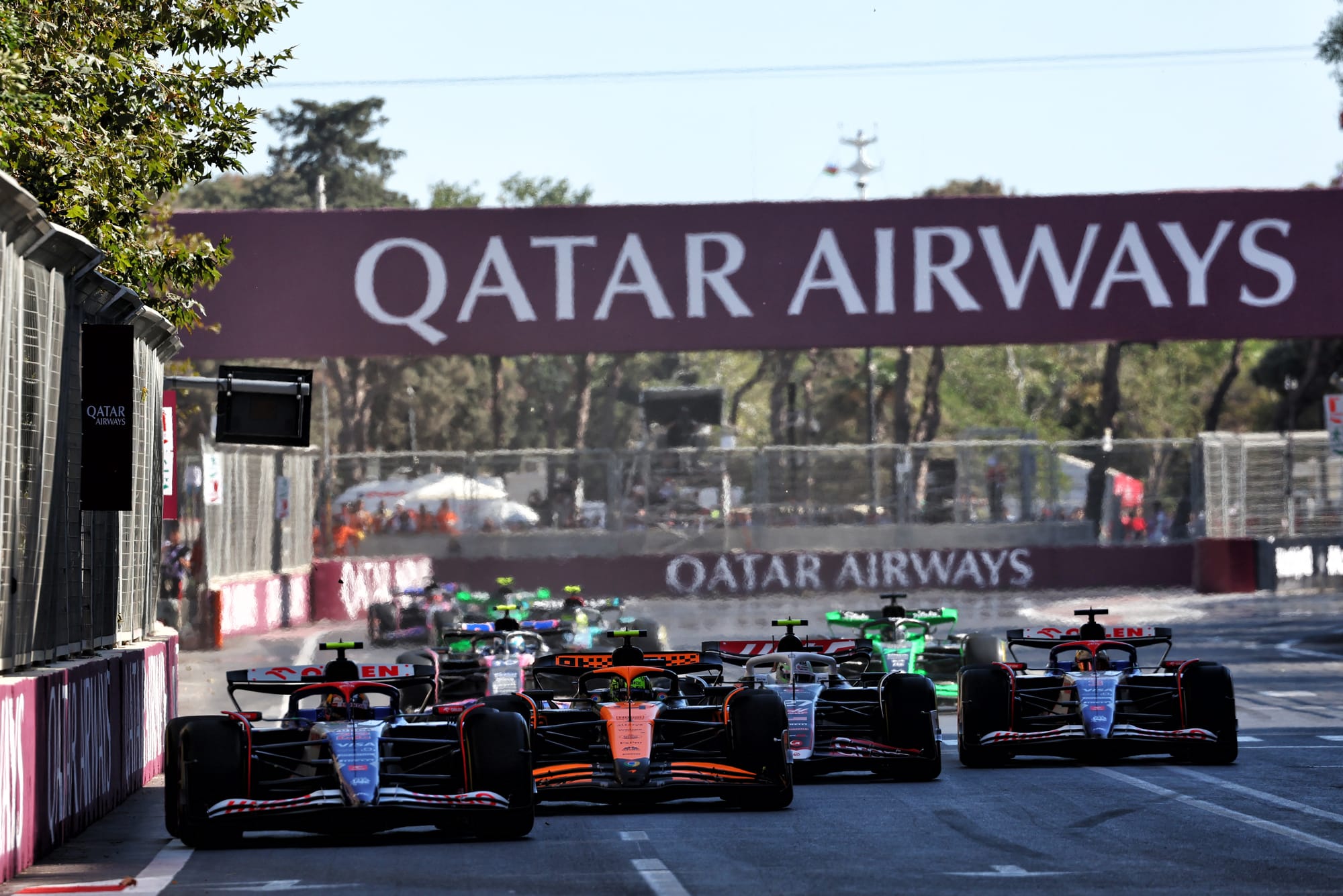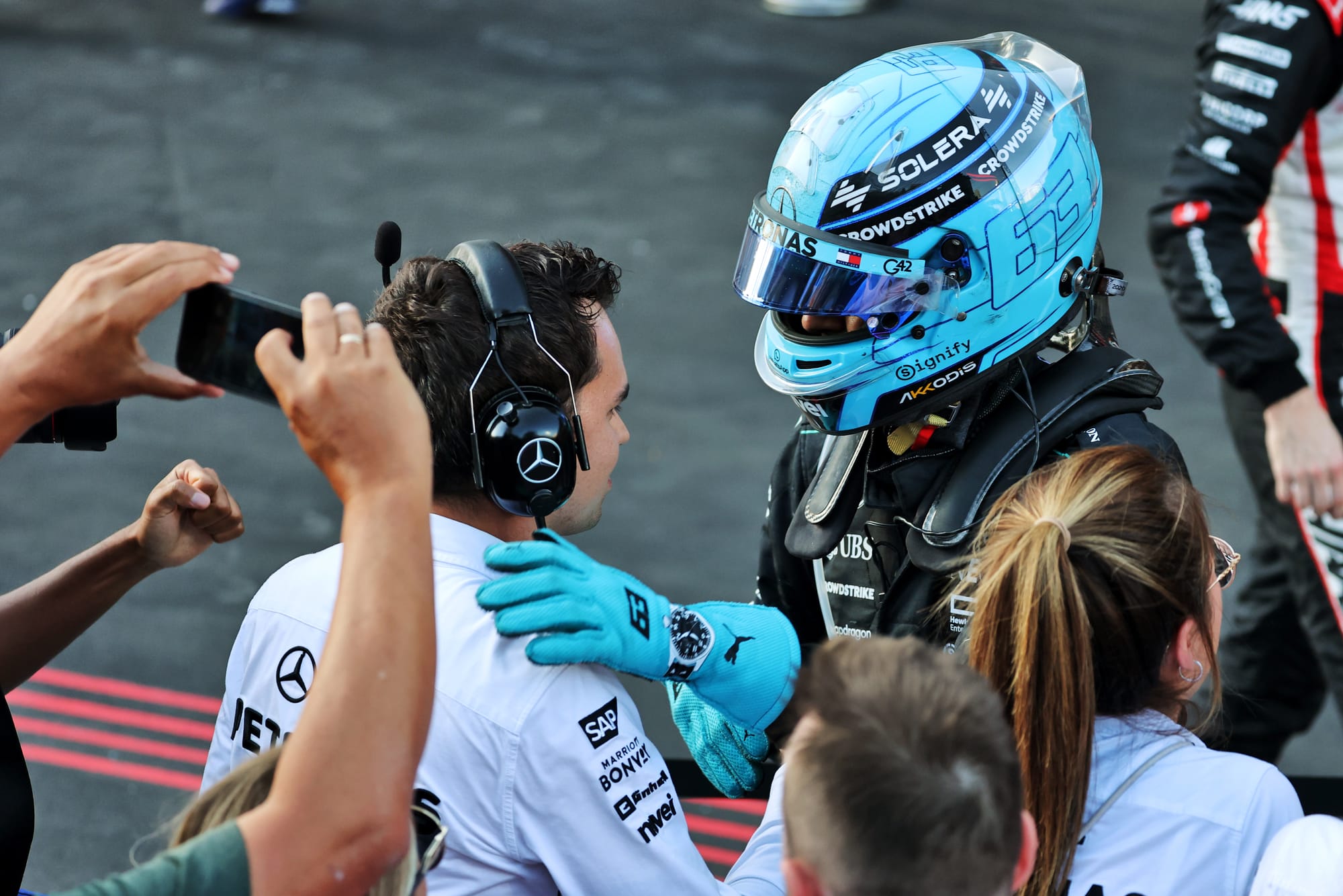Up Next

Mercedes finally appeared to have cracked Formula 1's ground effect era when it took three race wins in four before the summer break.
But it's returned from that break with a car that can only boast one fortuitous podium in three weekends.
That coinciding with Ferrari's mini-revival has demoted Mercedes back to being F1's fourth-fastest team and significantly reduces its hopes of improving from fourth in the constructors' championship in the final seven grands prix of the year.
So what's gone so wrong for Mercedes and when will things get better?
An important caveat
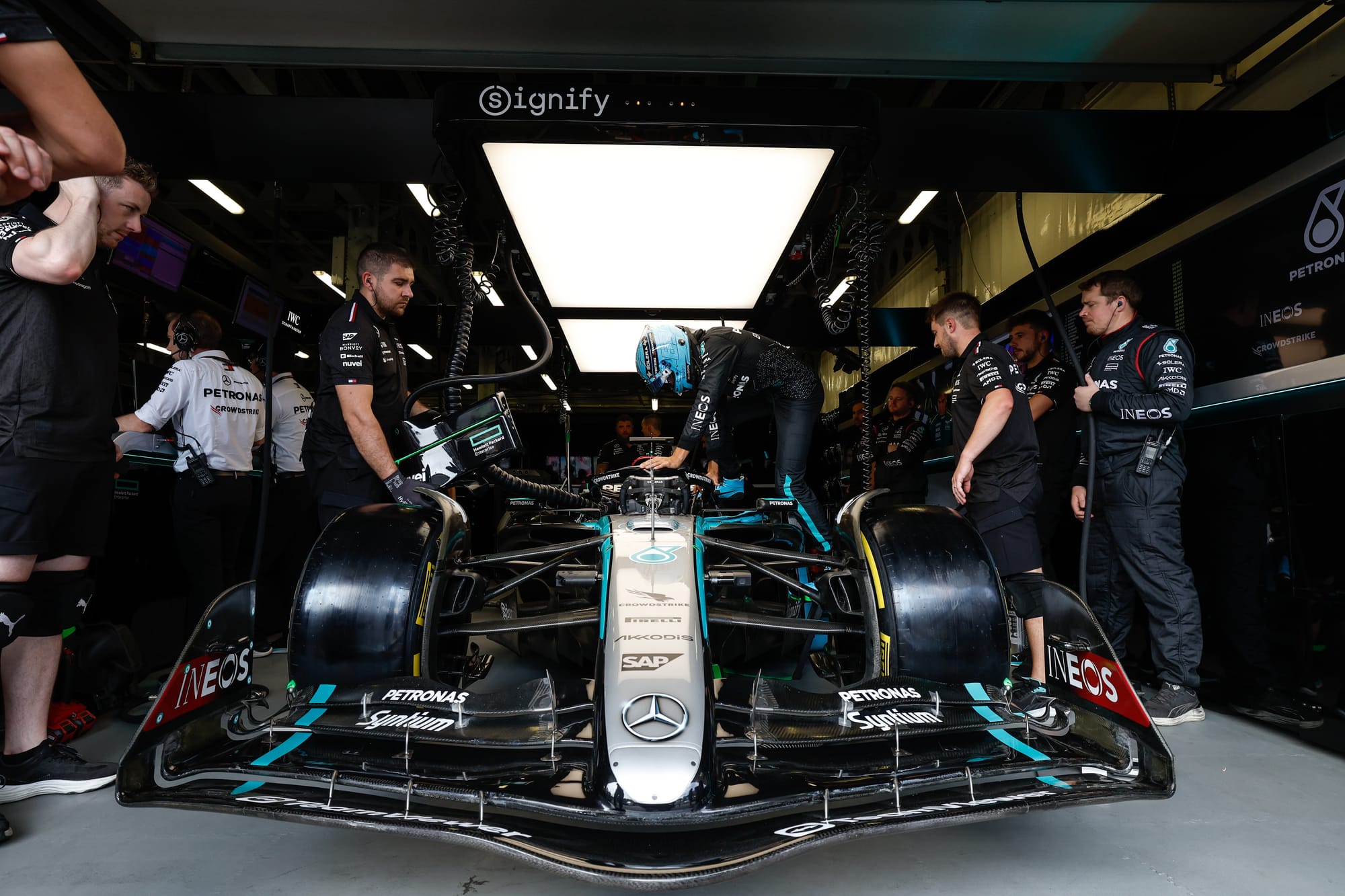
Mercedes' run of three victories in four races followed the introduction of its much-talked-about new front wing. That's a part that Red Bull team principal Christian Horner has highlighted as a "key area" to the progress made by both Mercedes and McLaren.
The front wing first appeared on George Russell's car at round eight in Monaco in late May, and was then run by both drivers at the next race in Canada, where Russell took pole position to kickstart the Mercedes golden run.
The team's prospects were seemingly transformed from distant spectators of the top three's fight to active participants in the lead battle right amongst Red Bull and McLaren and ahead of Ferrari.
But it's important to stress that while Mercedes took a leap forward, those three wins weren't all the consequence of dominant pace. Russell won in Austria thanks to the late collision between Max Verstappen and Lando Norris, inheriting the victory due to his strong run to third prior to that.
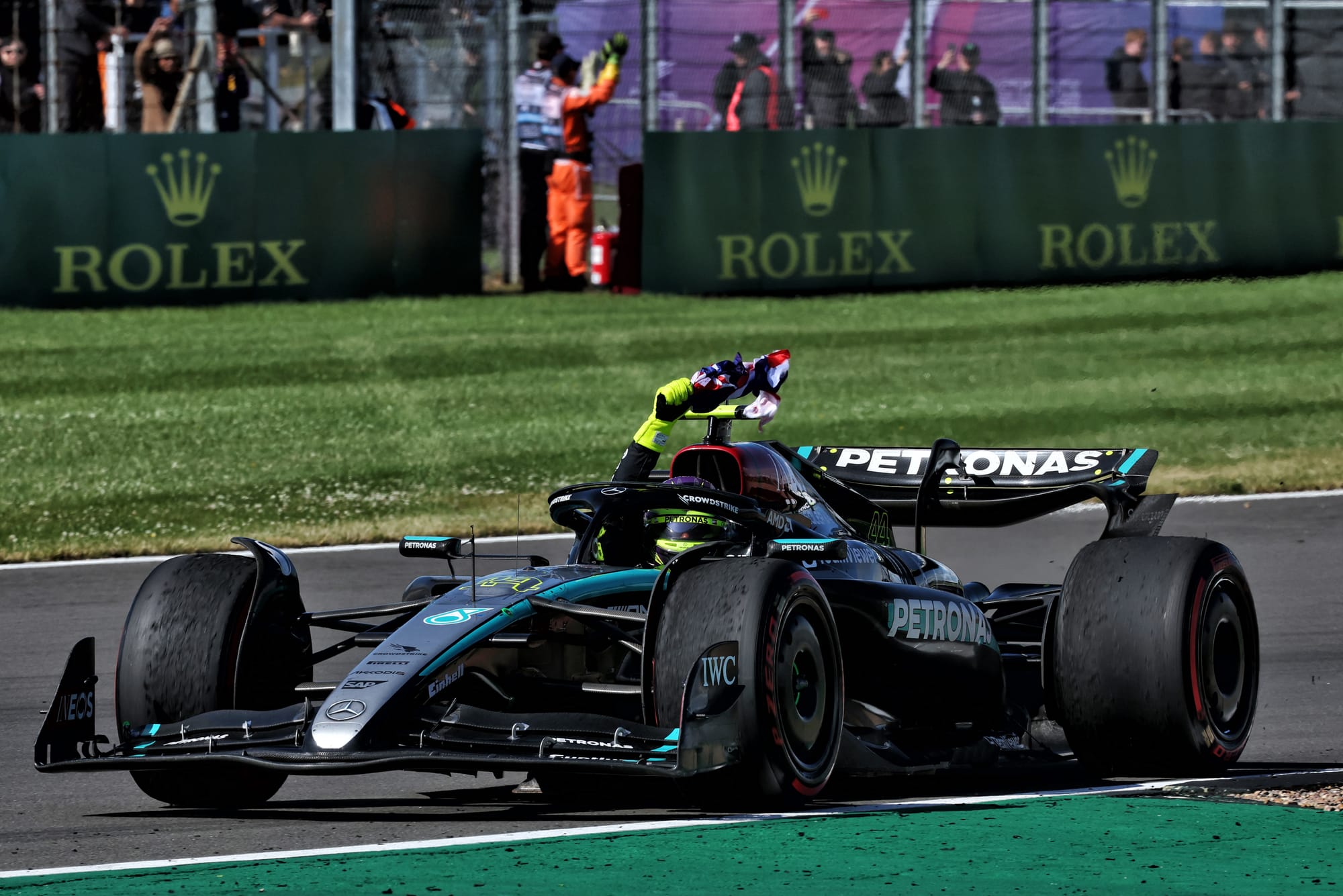
At Silverstone, McLaren really should have won but for strategic errors - although Mercedes did lock out the front row. That reflects how well the car goes on quicker circuits. That is also why Mercedes went well at Spa, although Verstappen's grid penalty helped Mercedes out there to a 1-2 finish before Russell's disqualification.
While Mercedes is a little disappointed with its form since its Spa victory, it's not quite the sudden reversal in performance that the results suggest.
That run of wins came on tracks that suited the car, often with circumstances on its side. In contrast, Zandvoort, with its long, slow- and medium-speed corners didn’t suit the car, while at Monza the high temperatures and the difficulties hustling the car into the slow corners made life difficult. It was a similar story in Azerbaijan, where the key to laptime is being able to attack on the brakes and entries to the slow, 90-degree corners.
That doesn't diminish the achievement pre-summer break considering where Mercedes was coming from, but does add important context to what followed.
So it was inevitable that Mercedes couldn't keep up that success rate. But there have been other factors that should concern Mercedes.
A new problem
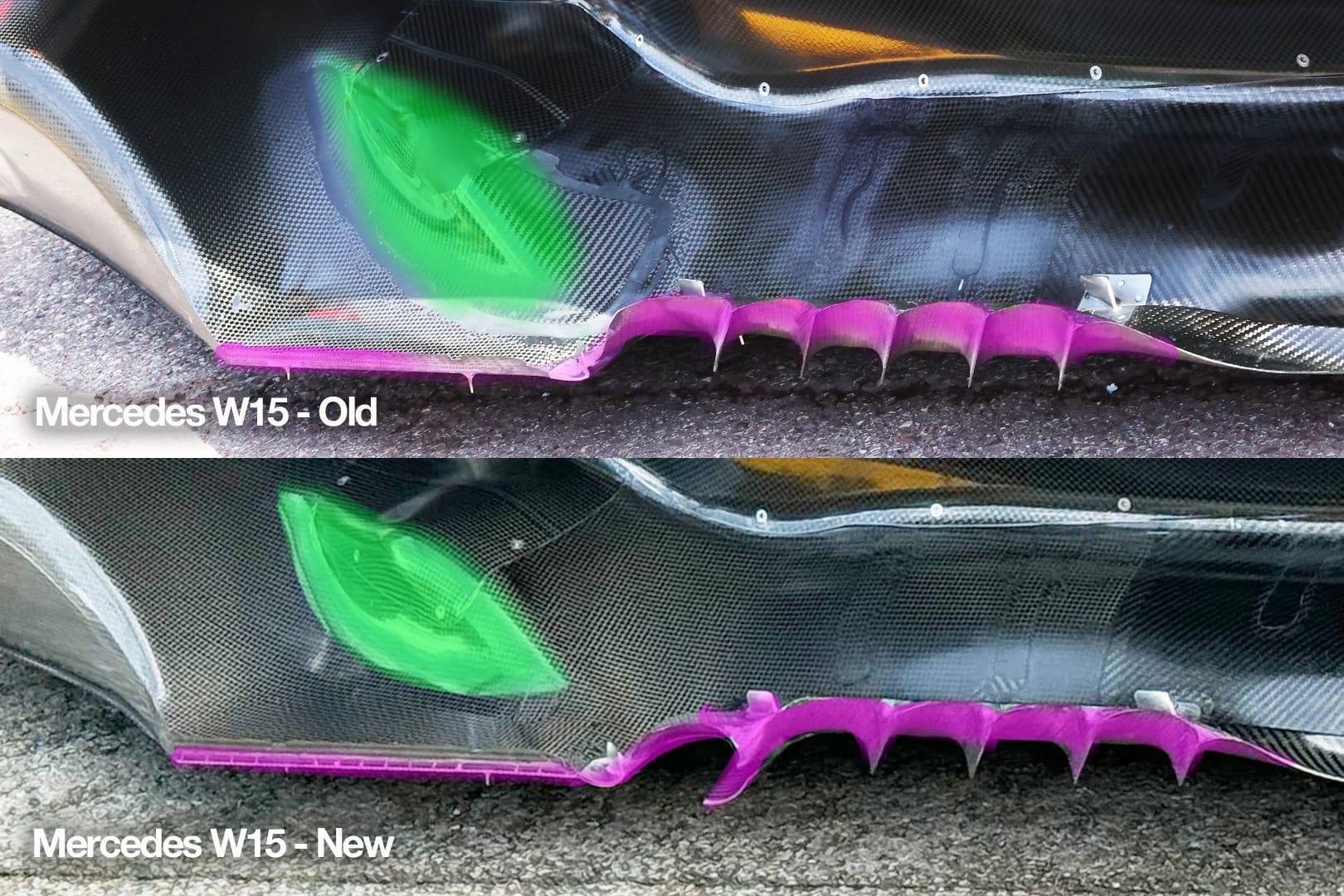
At Spa, Mercedes debuted an upgraded floor during Friday practice, where there was an immediate warning. Hamilton said after the two free practice sessions that "the car wasn't feeling particularly strong".
Mercedes reverted to the old floor specification on Saturday, partly down to it being a known package and the expected wet conditions, but also because of problems with bouncing and balance.
Trackside engineering director Andrew Shovlin explained this was down to the set-up, rather than any concerns with the upgrade itself.
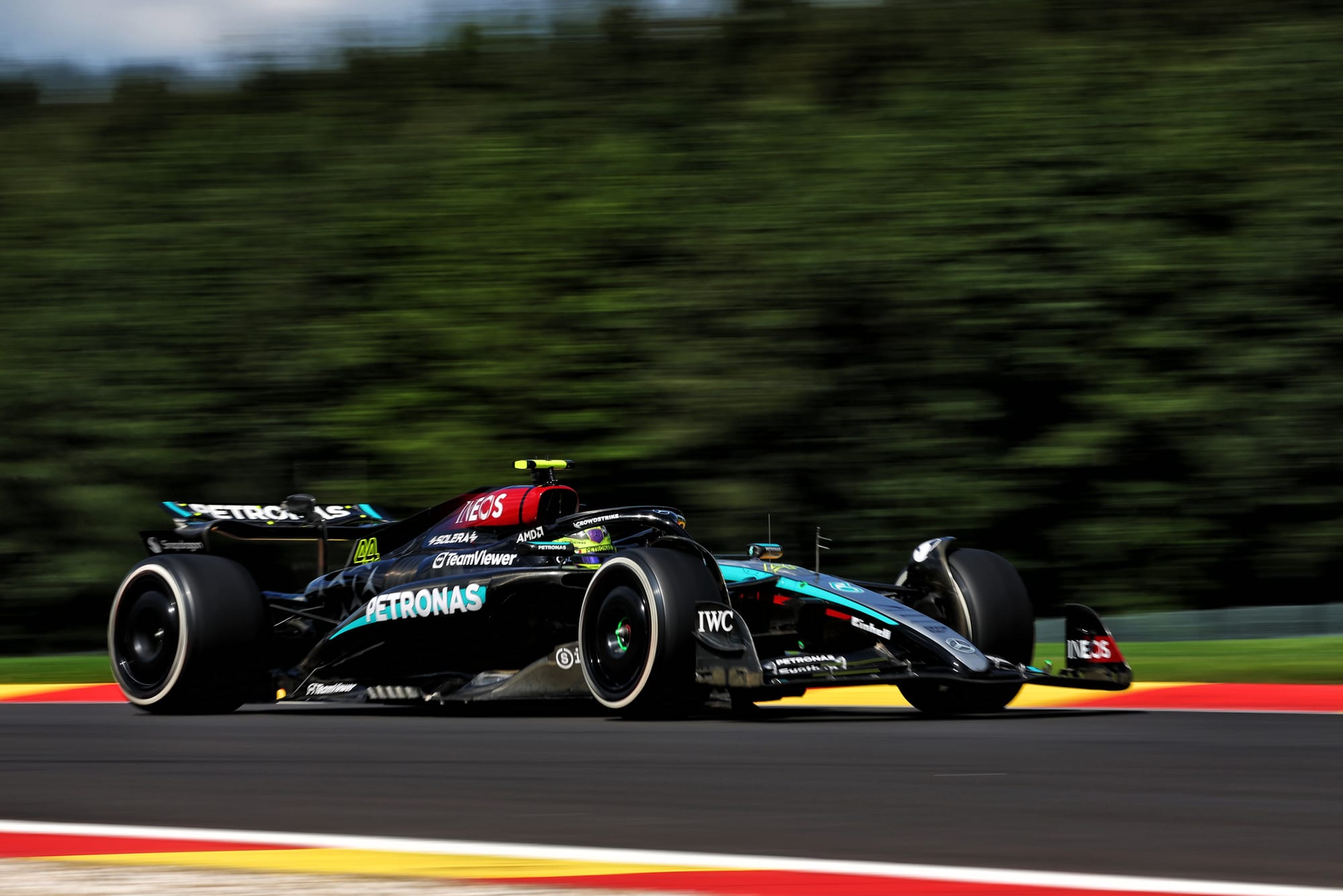
Running using the old-specification floor, Mercedes claimed its third win in four races before the newer floor reappeared at Zandvoort in late August, the first race after the break.
Mercedes struggled badly for consistency that weekend, not helped by the windy and sometimes wet conditions that technical director James Allison argued contributed to the team's failure to get in the groove.
Russell and Hamilton finished seventh and eighth in the race, with tyre struggles meaning Mercedes slipped behind the Ferraris. The balance problems Mercedes had there led to question marks about the characteristics the floor was creating.
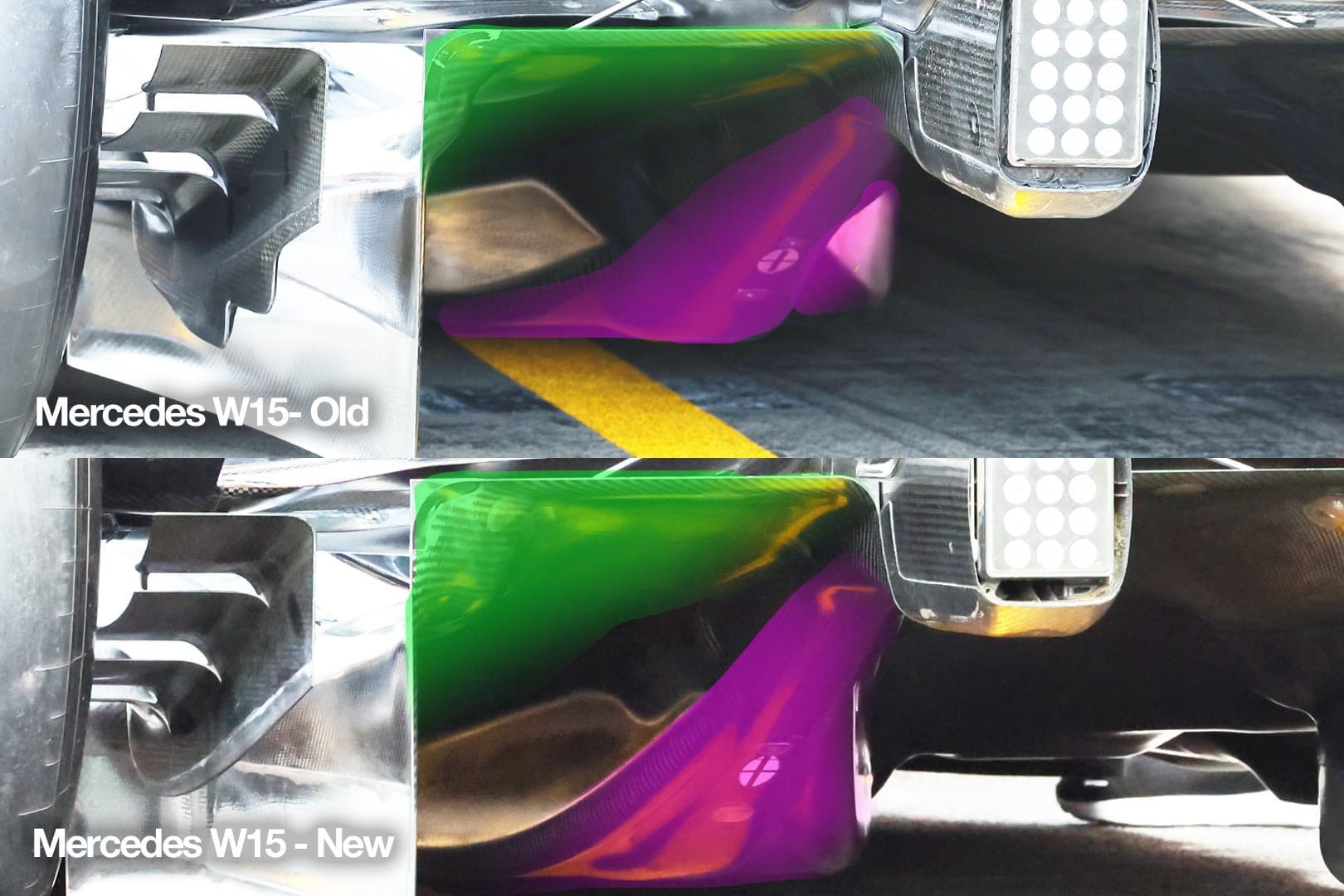
"It's not just a question of, 'Does your aero package deliver you downforce?' but, 'Is it delivering you the balanced car you need?'" Allison summarised.
The problem became more apparent at Monza, where Hamilton finished fifth and Russell seventh. Team principal Toto Wolff said the trouble was that the car could be quick over a single lap, hence Russell qualifying third, but lacked the balance to keep the tyres happy for a race stint.
After analysis at Mercedes' Brackley base between races, the decision was made to park the revised floor for the Baku weekend. Hamilton suggested the team wasn't entirely sure that the floor was the problem, but his "gut feeling" indicated it was to blame.
The Mercedes was the fourth-best car in Baku in its regressed specification. The car showed promise, with Russell topping FP3 despite problems on Friday that forced a power unit change, but in qualifying he was half a second off in fifth place as the faster Mercedes driver.
Russell felt that this proved the return to the old floor had not improved matters and on the evidence of Mercedes being firmly fourth quickest in Baku, it's hard to disagree.
Balance issues
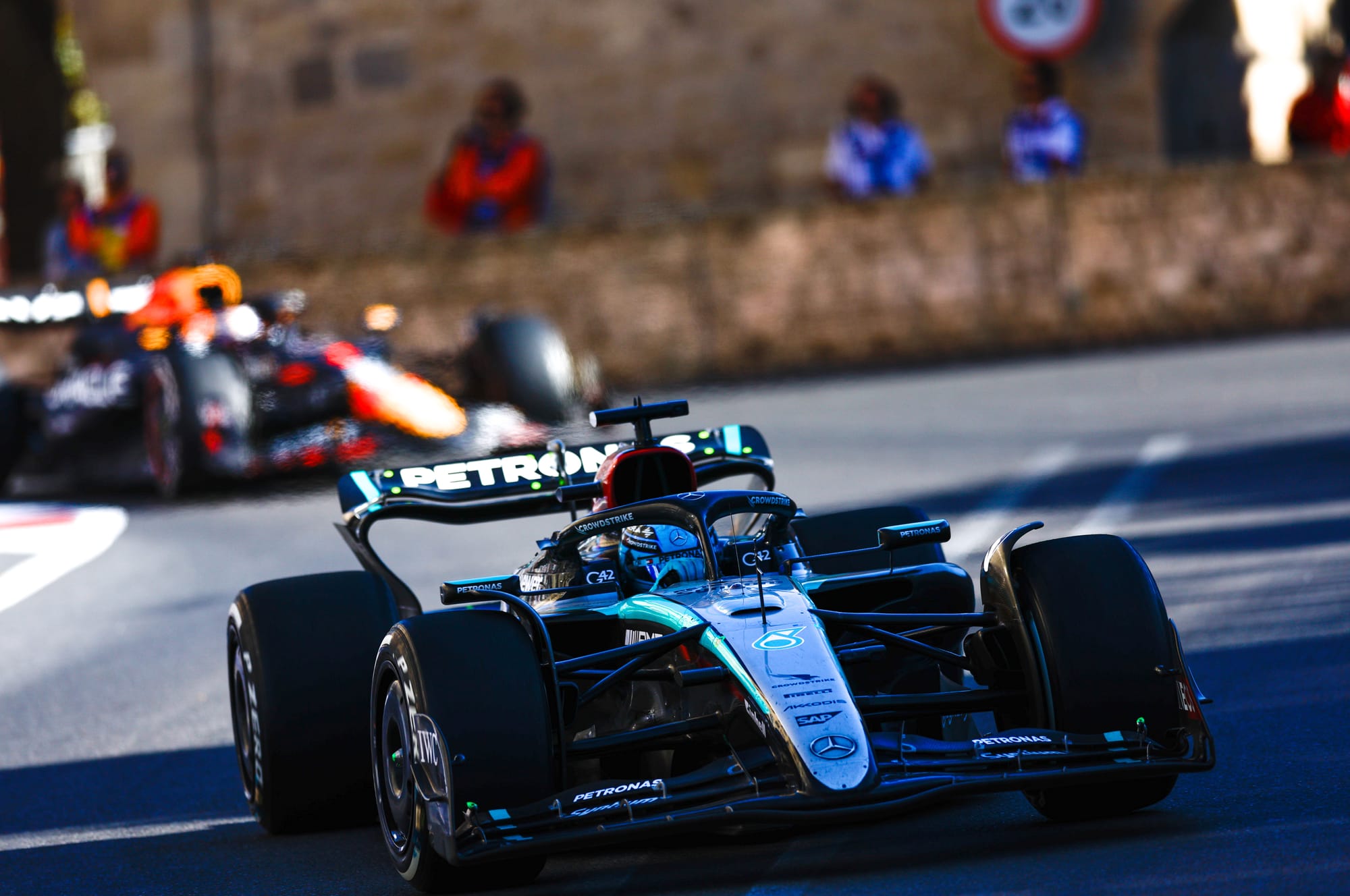
There is uncertainty about the floor, but the troubles appear wider than that. The Mercedes is a sensitive car, with a tendency for performance to swing from session to session and even tyre set to tyre set.
In fact, the Pirellis were the target of Russell's ire in Baku, saying the performance swings between tyre sets was "pretty infuriating". While Russell blamed the tyres, it's same for everyone and the way the tyres react can reflect balance sensitivities in the car.
It's possible the new floor could be playing a part in the struggles Mercedes has had. But as Hamilton admitted once he'd got some running under his belt in Baku, the old and new floor are ultimately very similar in terms of their performance.
The data gathered will have benefitted Mercedes, which will also take the old-specification floor to the second race of this back-to-back in Singapore.
Whether it will also run the new version there, which it also has available, remains to be seen but the team has indicated its likely to stick with the old version.
But one thing is clear: it's far more complicated than a floor upgrade that didn't work as hoped. As Wolff said, the new floor didn't work properly, but the old one seems to have the same problem during Mercedes' winning spell.
New floor planned
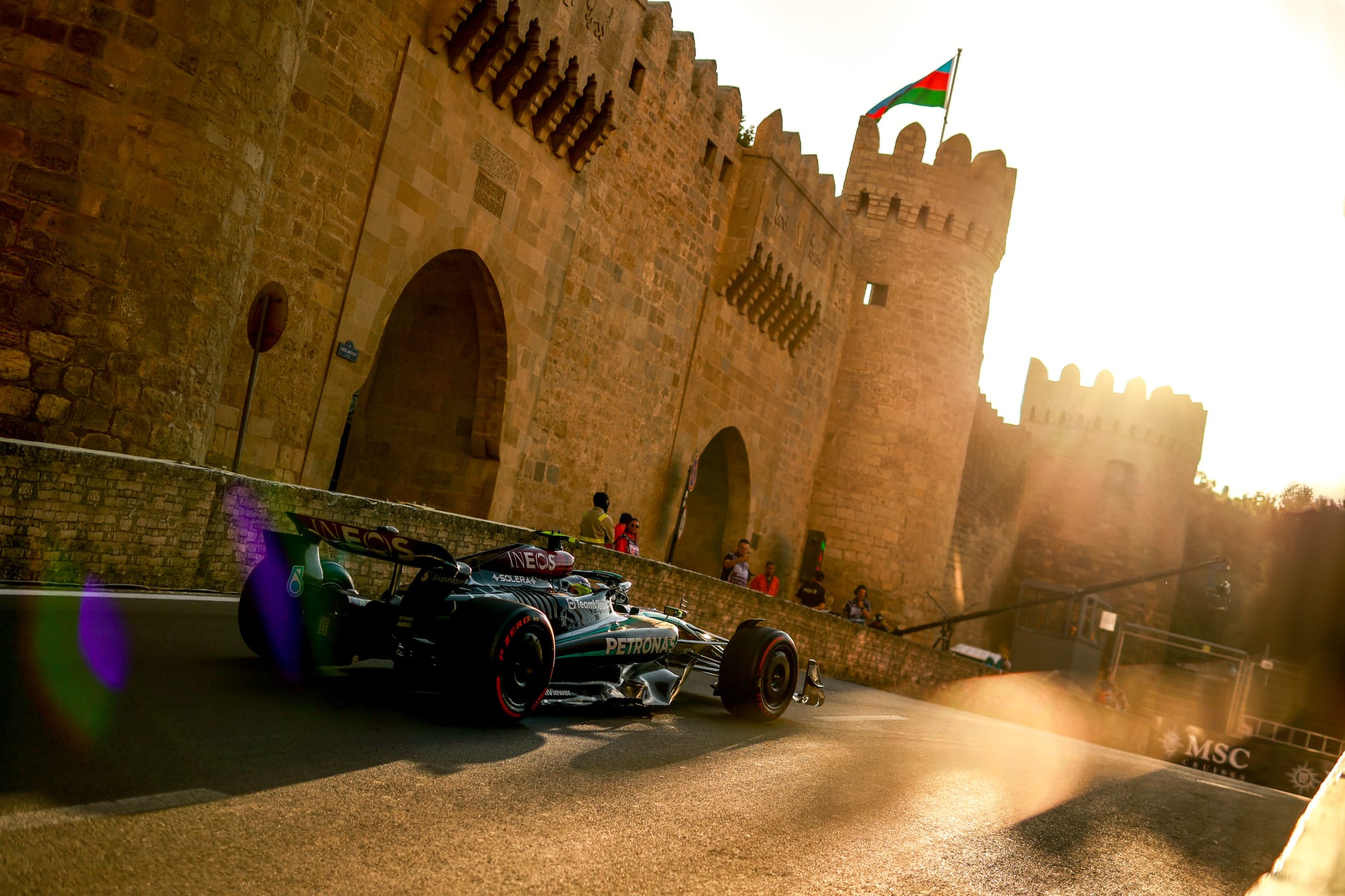
Wolff said Mercedes is likely to have a new floor for the United States Grand Prix in Austin in late October. And it'll have plenty of time to produce that given the one-month gap between Singapore and that race (and no shutdown restrictions, as was the case during the month-long summer break).
The question is whether Mercedes has a full understanding of the causes of its troubles - and, indeed, if its floor direction is a problem at all.
The Spa upgrade featured what was described as subtle changes to the diffuser roof profile, designed to increase airflow acceleration and therefore increase downforce. More visible were the changes to the floor edges, with modifications to the floor edge wing and an additional flap element added.
As ever with floor upgrades under the current regulations, pushing for more downforce can cause problems either in terms of the consistency of aerodynamic load or the impact on the balance. The question is whether Mercedes really understands what changes it needs to make.
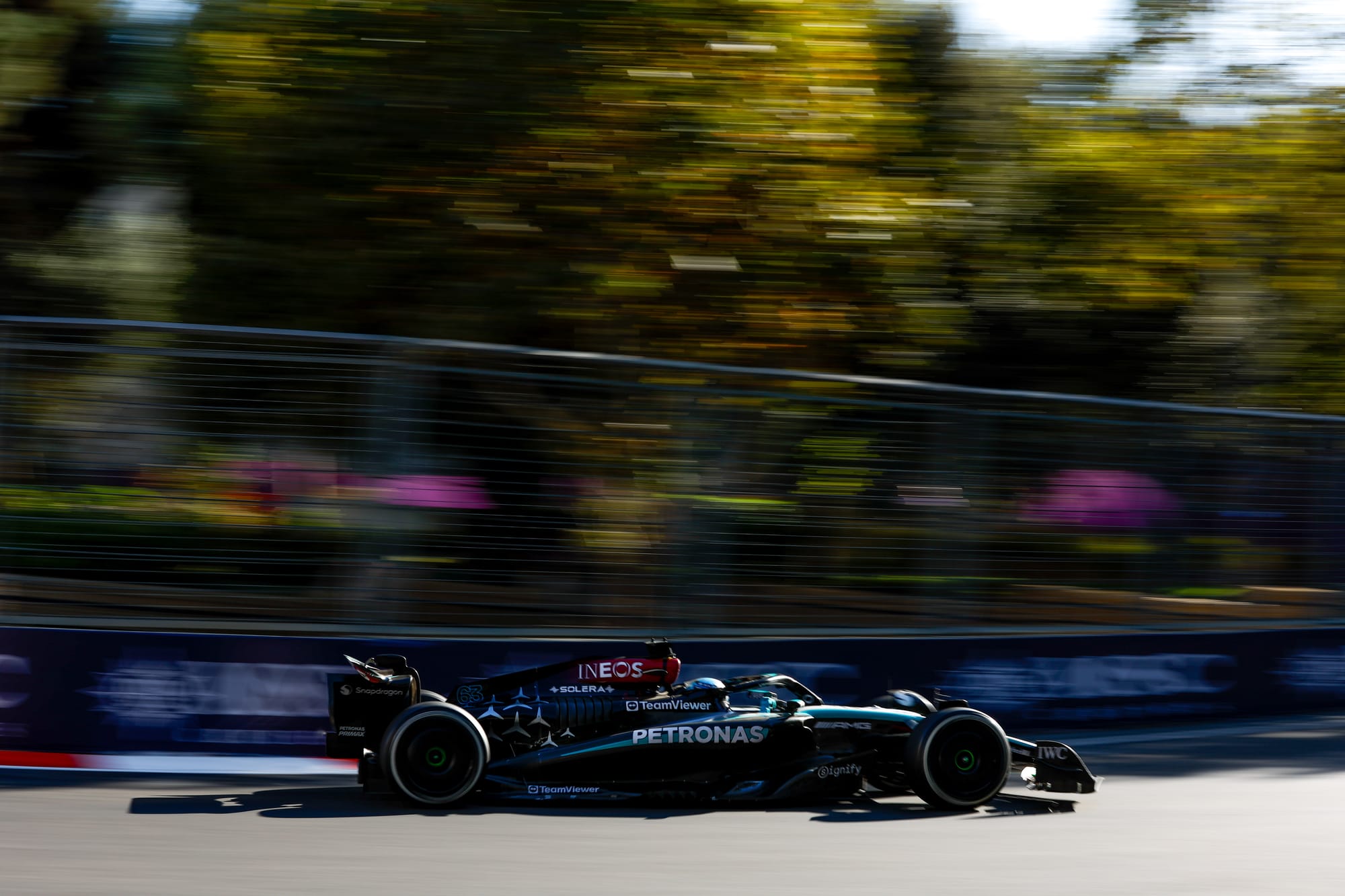
That's exactly what Mercedes needs to do if it's to build on that encouraging run before the summer break.
The team has also conceded that its cars continue to excel at some, but not all, tracks. That's been the case throughout this rules area, and of the seven circuits remaining Wolff pointed to just two more - Austin and Interlagos - that have traditionally suited it.
So working out whether Mercedes is back on track won't be as simple as judging its performance when its new floor debuts at Austin.
Why didn't Mercedes chase F1's best problem-solver?
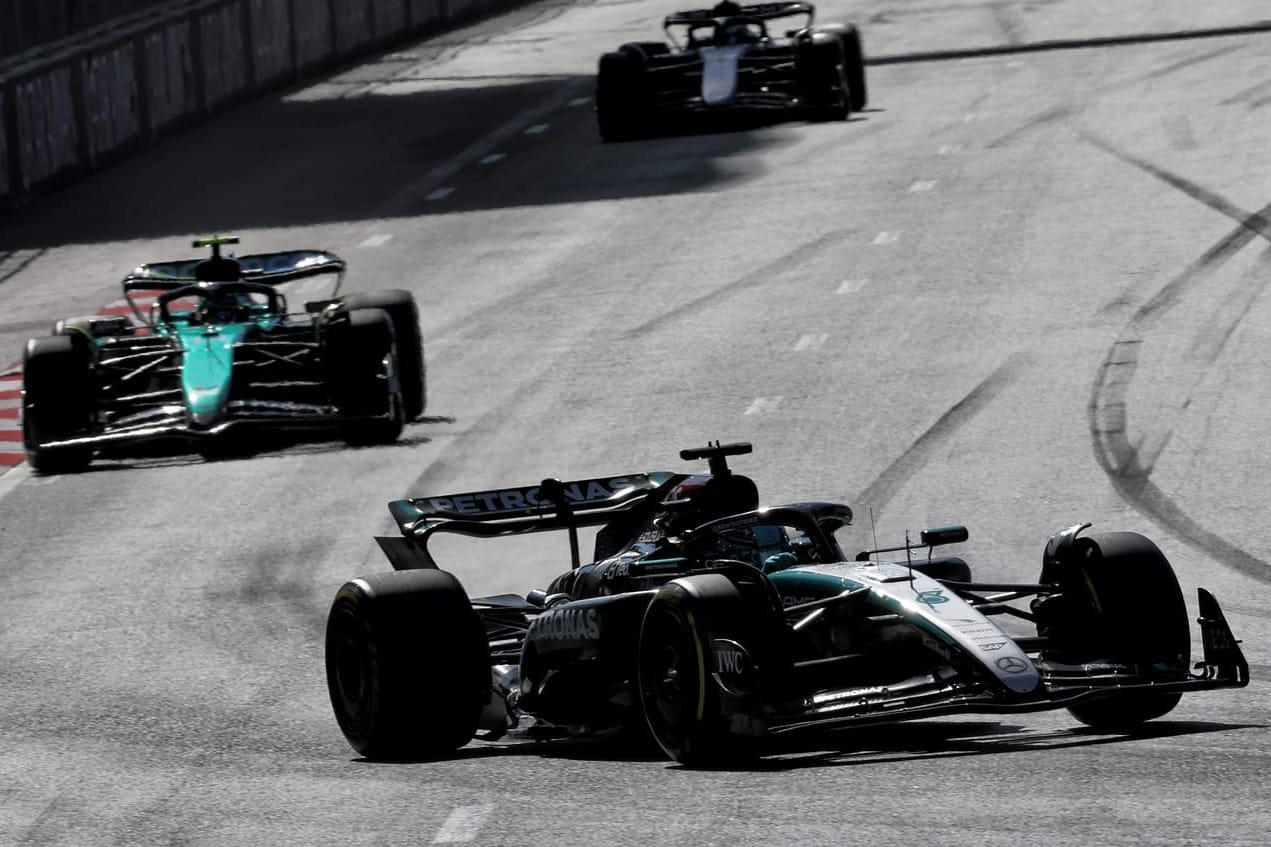
There are few people in F1 that you want in your team more than Adrian Newey when you hit a development problem.
But Wolff claimed Mercedes ultimately decided to 'pass' on Newey before he was snagged by Aston Martin for 2025.
"Every team kind of gave it a thought, and James [Allison] and I discussed it, collaborated about it, and came to the conclusion that the structure we have today is the one that we have faith in, that we want to continue," Wolff explained.
"But having said that, both of us have great respect for Newey. But we passed on that one, because we believe in our team at that stage."
You’d imagine that’s because Mercedes doesn't see an obvious place for Newey within its current structure, rather than not rating him. Wolff called him "a great designer" and said Newey and former Mercedes engine chief Andy Cowell will be "a package to be reckoned with" at Aston Martin.
Aston ultimately was able to offer Newey the greatest flexibility to spearhead and shape its design team in a way it's difficult to imagine Mercedes or Ferrari doing.
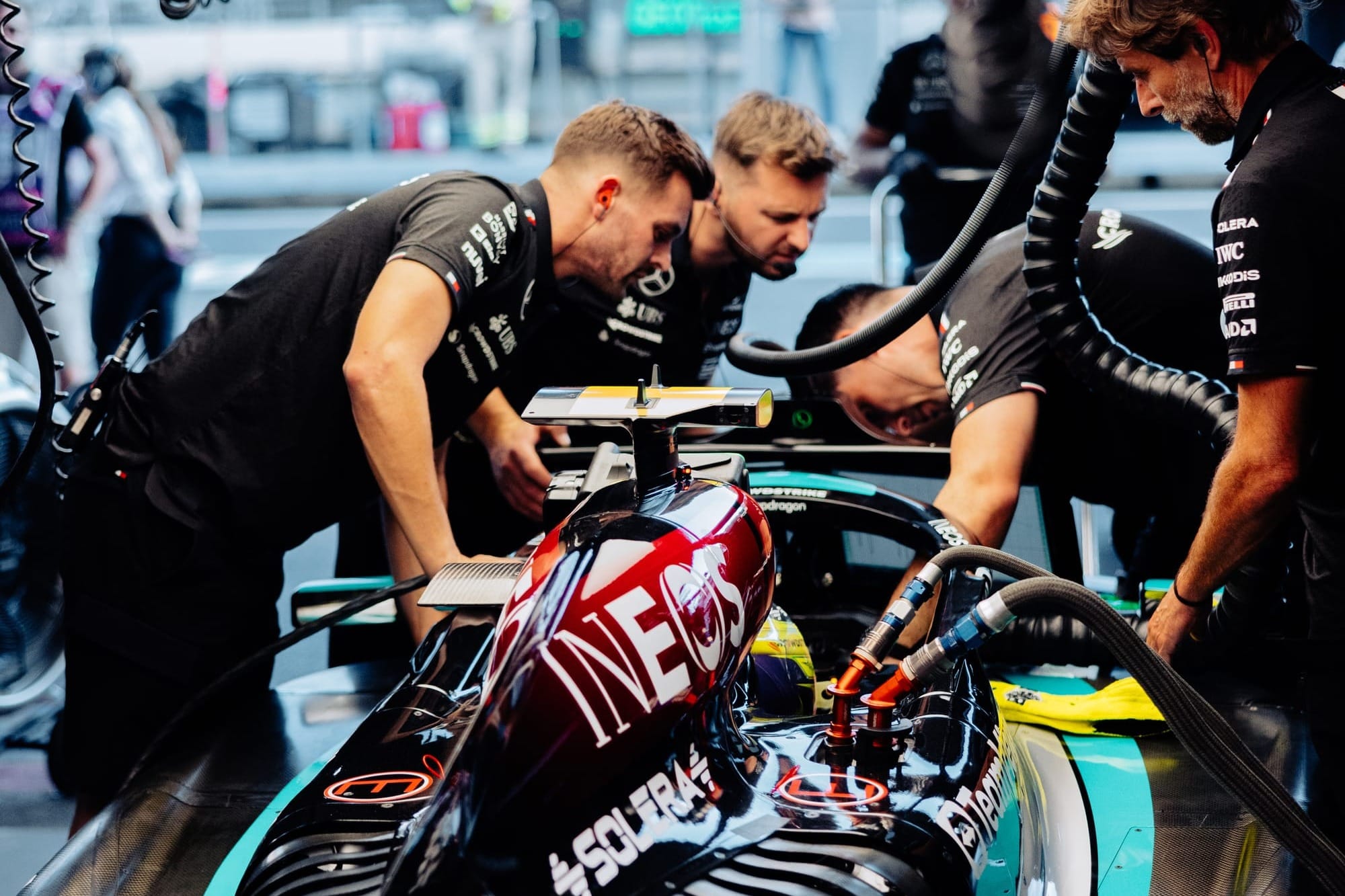
Much like Aston and Ferrari, having made huge gains, Mercedes has run into problems when it comes to sustaining the development of this current generation of cars.
That’s why understanding, and fixing, the problems it's currently battling - whether they are related to the floor design or not - is so crucial. After all, get it right and there's no reason why Mercedes can't fight for the world championship next year.
But get it wrong and it could face a very frustrating 2025.


